Conrad von Vietinghoff, his father
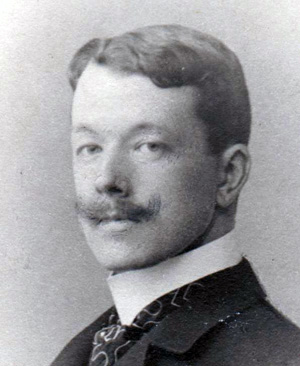 Conrad Adalbert Egon von Vietinghoff
Conrad Adalbert Egon von Vietinghoff[also: Konrad Adelbert]
Born: December 29, 1870 in Salisburg in Livonia,
today Mazsalaca in the North of Latvia.
(according to the old Russian calendar born: December 17)
Died: January 11, 1957 in Zurich, Switzerland
Foreword
An exceptional human being with distinctive abilities, weaknesses and inclinations that lived in times of general changing values. First he was attached to a strict but out-dated order with the burden of 15 generations of documented ancestors. In the course of his life, he continuously freed himself from the restrictive tradition of centuries which is hard to comprehend or is even absurd from a contemporary point of view.
Despite his interest on what happened in the world and within his limited circle of friends, he lived quite secluded after the death of his wife. He passed on to his son Egon the sense for a quiet and consistent artistic lifestyle. Simultaneously Egon was also influenced by his father to be somewhat isolated from society which he followed during the second half of his life and the partly voluntary renunciation of public acknowledgement.
Conrad's parents
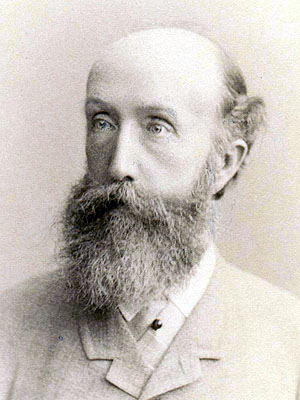
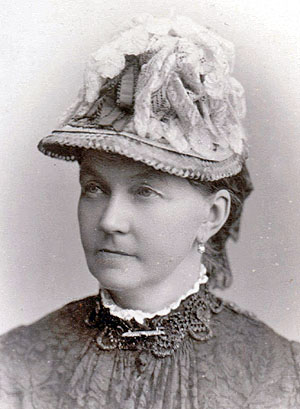 Baron Arnold Julius v. Vietinghoff v. Riesch
Baron Arnold Julius v. Vietinghoff v. Riesch– Born: November 18, 1833 in Wolmar in Livonia (Valmiera in Latvia)
– Died: December 29, 1918 in Riga, Livonia (Latvia)
Baronin Helene v. Vietinghoff, née Transehe-Roseneck
– Born: October 29, 1837 in Alt-Schwaneburg, Livonia
– Died: July 24, 1923 in Neschwitz, Saxony
Table of contents
 1) Conrad and the Vietinghoff family
1) Conrad and the Vietinghoff family2) Conrad goes his own way
3) Homage to Conrad (at the occasions of his 70th and 80th birthday)
4) Memories from his doctor
5) Memories from Liane, his daughter-in-law
6) Homo...
7) Conrad as a source of inspiration of the novels of Marguerite Yourcenar
8) Alexis, Or The Treatise on a Futile Struggle
9) Coup de Grace
10) Quoi? L' Eternité
11) General remarks and corrections
1 - Conrad and the Vietinghoff family
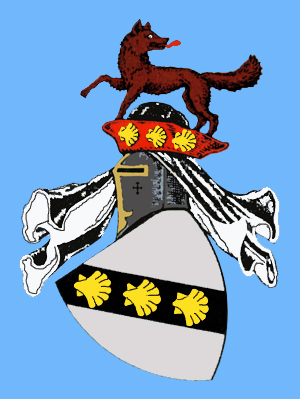 Baron Conrad von Vietinghoff was a descendent of a German-Baltic aristocracy. The family of ancient nobility was first time mentioned in a document in 1230. In the 14th century, some of his ancestors left their family domains on the Lower Rhine near Essen (North Rhine-Westphalia) and marched as knights of the "Teutonic Order" to the Baltic region, with the aim of Christianizing and trade expansion.
Baron Conrad von Vietinghoff was a descendent of a German-Baltic aristocracy. The family of ancient nobility was first time mentioned in a document in 1230. In the 14th century, some of his ancestors left their family domains on the Lower Rhine near Essen (North Rhine-Westphalia) and marched as knights of the "Teutonic Order" to the Baltic region, with the aim of Christianizing and trade expansion. There the order was the decisive power in religion, politics and economy during a long period. From 1346-1561, the country was an independent territory of the Order and part of the Holy Roman Empire of the German Nation. Later on it came under the rule of Poland and Denmark, Sweden, and finally Russia, in 1710.
Some members of the Vietinghoff family are known as Commanders and Masters of the Order. Others, who were not knights, emigrated to the Baltic area as well. Over the centuries, different familial branches widely ramified, owned and managed large estates. One of them got an additional name, therefore to this day many of his descendants are named Vietinghoff-Scheel.
The various Vietinghoff families in the Baltic region followed the Reformation whereas the ancestral line "von Vittinghoff called Schell zu Schellenberg" from the Lower Rhine, who did not emigrate, remained Catholic. Their ancestral seat was Schellenberg castle which today is in Essen-Rellinghausen, in North Rhine-Westphalia. This branch of male lineage ended in 1993.
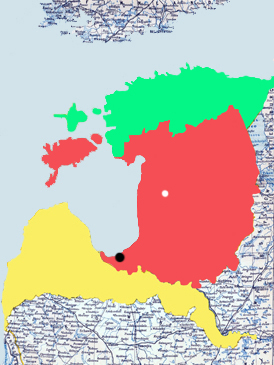 Until the end of the 19th century, many members of the large Vietinghoff family continued their migration from the Baltic region westwards to Scandinavia (mainly Sweden and Denmark) and Poland or eastwards to the interior of the Russian Empire. Some others eventually returned to the German territories and from there some later wandered to Austria.
Until the end of the 19th century, many members of the large Vietinghoff family continued their migration from the Baltic region westwards to Scandinavia (mainly Sweden and Denmark) and Poland or eastwards to the interior of the Russian Empire. Some others eventually returned to the German territories and from there some later wandered to Austria. However, the family branch of which Conrad was a part remained always in the Baltic provinces, whose mainland consisted of the historic regions Courland (yellow), Livonia (red) and Estonia (green). Conrad's ancestors lived in Livonia (in Latvian: Vidzeme); his home was situated some 150 km north-east of the capital Riga and some 80 km east of the Gulf of Riga.
Upon foundation of the republics of Latvia and Estonia in 1918/1920, Livonia disappeared from the map as it was divided, the southern and larger part to be joined to Courland and forming today's Latvia, the northern but smaller part joining Estonia. The black spot marks the Latvian capital Riga, and the white one the approximate location of Salisburg (Mazsalaca) in the Northwest of Latvia.
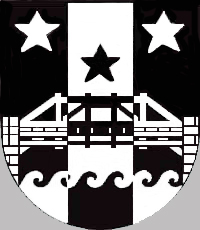
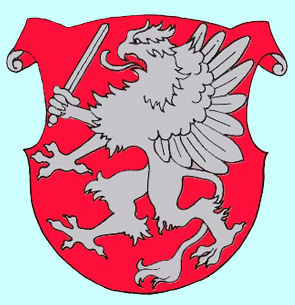 Members of the Vietinghoff family with differently written names were not only mentioned in different ranks of the knightly Teutonic Order but also in royal civil and military services, at courts or in battles of numerous countries:
Members of the Vietinghoff family with differently written names were not only mentioned in different ranks of the knightly Teutonic Order but also in royal civil and military services, at courts or in battles of numerous countries:Denmark, Sweden, Poland(-Lithuania), Russia, Germany, Austria, France, Spain, the Netherlands, Württemberg, Saxony, Prussia, Hanover, Braunschweig, Courland, Mecklenburg, and Bayreuth.
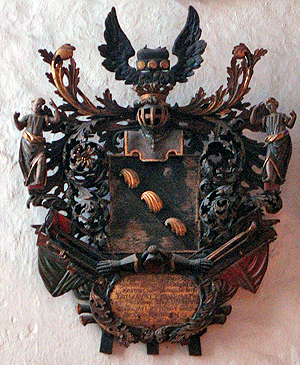 In short: they have helped to shape European history and had suffered for it. The family contributed to international campaigns with many other German-Baltic families.
In short: they have helped to shape European history and had suffered for it. The family contributed to international campaigns with many other German-Baltic families. Ranking from cadet to general, they are found on the battle fields of all decisive wars fought all over Europe during the last centuries – sometimes even on both sides of the hostilities at the same time. They defended the Occident (Christian West) against the Ottoman Empire (Turkish), and went to war against Wallenstein and Louis XIV. Some were guillotined during the French Revolution while many family members fought against Napoleon I except for a few who supported the emperor. Altogether, 39 Vietinghoffs were involved in the Napoleonic wars.
Many monarchs had a general among their troops with the name of Vietinghoff, such as Christian V of Denmark, Charles XII of Sweden, Alexander I, II and III of Russia, Prussian kings and German emperors; but Frederick the Great of Prussia even had two.
One Vietinghoff drowned while a Russian captain of a ship in the naval Battle of Tsushima against the Japanese in 1905, another was an Osman Major in Constantinople. In 1945, a Colonel General, who was a member of the Vietinghoff family negotiated independently the German surrender to the Allied forces in Italy (signed on April 29, in effect on May 2) before the unconditional surrender of all German troops on May 8. Thus, he prevented the possible bombing of Rome. At that time, ironically, he faced opposite a Vietinghoff with an American mother who worked as an interpreter on the American side. All these family members are not direct ancestors of Conrad and Egon von Vietinghoff.
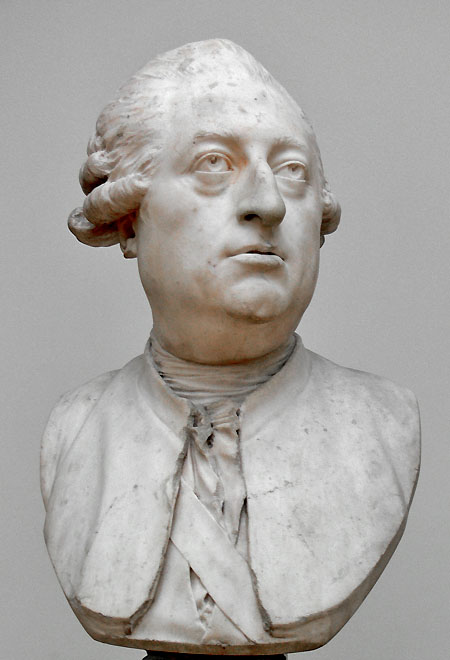 If they were not military men, they acted as chamberlains, Privy Councillors, judges, and chief administrative officer of their district. In addition, they managed their large farms and woods. In the Westphalian lineage, named Vittinghoff, we also have canons and members of the "Order or the Knight of Malta".
If they were not military men, they acted as chamberlains, Privy Councillors, judges, and chief administrative officer of their district. In addition, they managed their large farms and woods. In the Westphalian lineage, named Vittinghoff, we also have canons and members of the "Order or the Knight of Malta".A particularly impressive personality was Baron Otto Hermann von Vietinghoff (1722-1792). His career started as a Russian military officer and culminated as the general director of the Russian Medical Committee which corresponded to the position of a health minister.
He owned several factories and up to 30 manors; in addition he built the first theater for the city of Riga from his own resources and maintained an orchestra there as well. For a long period, the theater was considered as one of the best German-speaking stages (today Richard Wagner Street 4).
Therefore, unofficially he was called The half king of Livonia. His marble bust by of the most important portrait sculptor in Europe at that time, Jean-Antoine Houdon (1741-1828) is shown at the Bode Museum in Berlin. The artist also created the portraits of Gluck, Molière, Voltaire, Diderot, Rousseau, Washington, Franklin, Jefferson, Napoleon and of Catherine the Great.
However, also Otto Hermann is not a direct ancestor of Conrad and Egon von Vietinghoff.
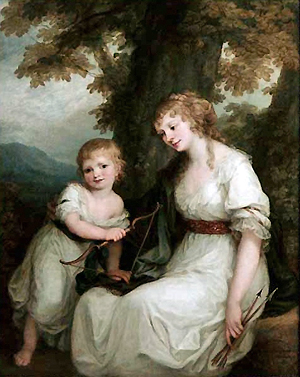 But let’s not forget Juliane von Krüdener (1764-1824), one of the daughters of Otto Hermann. She was an author and the influential confidante of the Russian tsar who sent her in behalf of him to the Congress of Vienna. She was called the Mother of the Holy Alliance against Napoleon, the woman clothed with the sun against the anti-christ.
But let’s not forget Juliane von Krüdener (1764-1824), one of the daughters of Otto Hermann. She was an author and the influential confidante of the Russian tsar who sent her in behalf of him to the Congress of Vienna. She was called the Mother of the Holy Alliance against Napoleon, the woman clothed with the sun against the anti-christ.In addition, she triggered a European fashion wave with her novel Valérie, and she was a friend of the writer Jean Paul for some years. Her portrait, created in 1786 by the famous Angelika Kauffmann (1741-1807), is exhibited in the Louvre Museum in Paris.
Later, she independently financed and operated food programs in Bale and in Württemberg for the people impoverished by the Napoleonic Wars. There she moved the masses with her mystic-pietistic speeches to such a degree that she was finally expelled for being too subversive. Finally, the effusive lady was rejected by the tsar and died poor and secluded on the Crimean Peninsula.
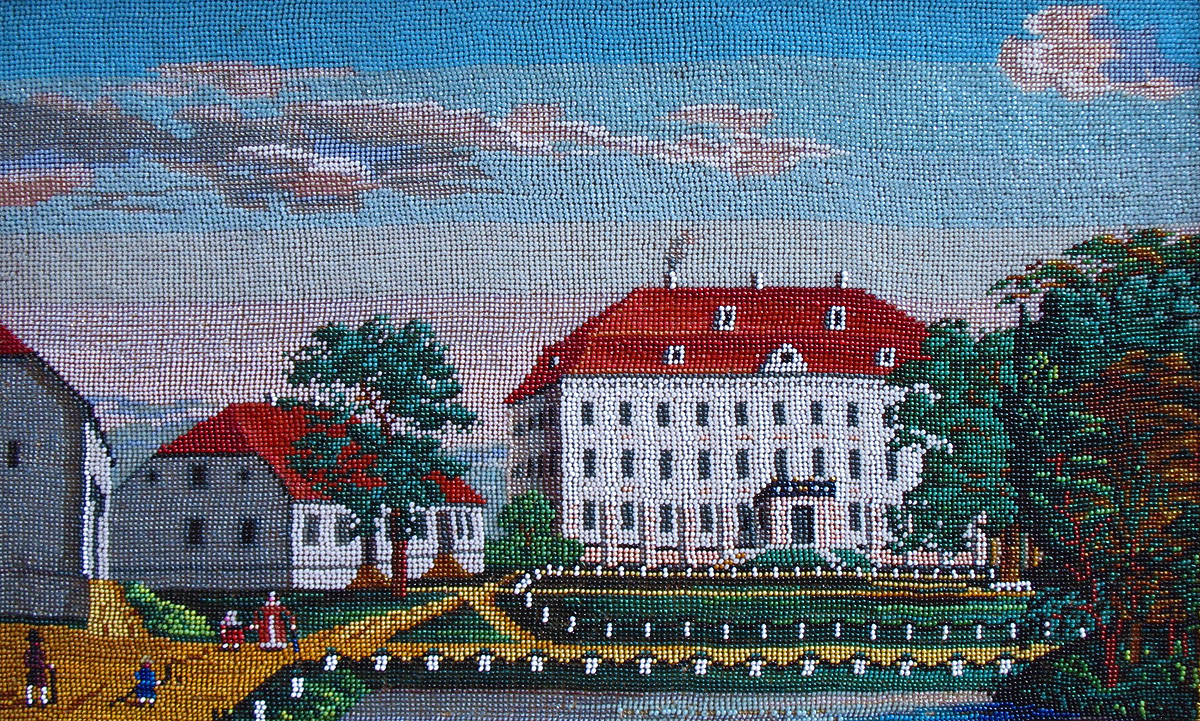 There are hardly any written records of the less showy characters, as can easily be understood. Still, tradition names one Vietinghoff as assiduous student of Martin Luther in Wittenberg, as well as many ladies-in-waiting and canonesses, and several abbesses. Another daughter of Otto Hermann, Annette Margarethe von Vietinghoff, married Johann George von Browne-Camus, Ludwig van Beethoven's first sponsor. Thus the composer dedicated to both several songs, string trios, piano sonatas, and gave her piano lessons. Boris von Vietinghoff (1829-1901) was a composer of the Russian romantic period.
There are hardly any written records of the less showy characters, as can easily be understood. Still, tradition names one Vietinghoff as assiduous student of Martin Luther in Wittenberg, as well as many ladies-in-waiting and canonesses, and several abbesses. Another daughter of Otto Hermann, Annette Margarethe von Vietinghoff, married Johann George von Browne-Camus, Ludwig van Beethoven's first sponsor. Thus the composer dedicated to both several songs, string trios, piano sonatas, and gave her piano lessons. Boris von Vietinghoff (1829-1901) was a composer of the Russian romantic period.The Swedish writer, Rosa Fitinghoff (1872-1949) was the last sweetheart of Henrik Ibsen (1828-1906) inspiring him for his last drama When We Dead Awaken (1899). In Sweden, Russia and the U.S.A. there are still living family members with this adapted writing of the family name. Since the 20th century, the descendants have numerous modern professions throughout society that are living in twenty countries in Europe and overseas.
2 - Conrad goes his own way
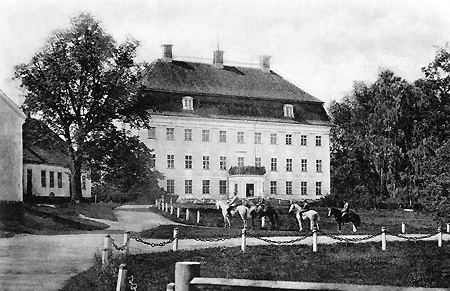 Apparently, this was a tradition somewhat difficult to understand in modern times, being rich in glory with honor and involving responsibility and suffering of great misfortune. All this weighed rather heavily on the extremely sensitive Conrad, the youngest of four brothers. Gradually he distanced himself from this tradition in order to develop his unique talent for music.
Apparently, this was a tradition somewhat difficult to understand in modern times, being rich in glory with honor and involving responsibility and suffering of great misfortune. All this weighed rather heavily on the extremely sensitive Conrad, the youngest of four brothers. Gradually he distanced himself from this tradition in order to develop his unique talent for music.He preferred to read the New Testament in Greek or the scores of the symphonies of Beethoven and Brahms. Doing further, he played them with his cousins eight-handed on the two grand pianos standing in his parent's manor house Salisburg, because the concert halls of Riga or Reval (nowadays Tallinn, the capital of Estonia) were hard to reach by horse-drawn carriage and, in 1888, recorded music was not yet invented.
The Salisburg Manor house, with 62 rooms, became a Vietinghoff property via the maternal lineage von Voelkersahm. It was burned in the Russian Revolution 1905/1906, and remained a ruin for 25 years until 1932 when it hosted the local high school. In 1944, some villagers prevented it to being destroyed by the withdrawing German Wehrmacht. Since 1977, it is the elementary school. The Latvian name of the village is Mazsalaca.
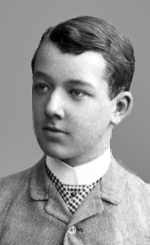
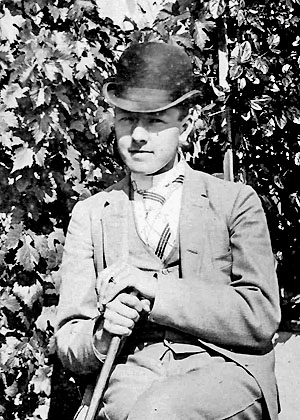 First, Conrad von Vietinghoff started his studies in agriculture and economy at Dorpat (today Tartu in Estonia), but left his homeland in 1891 and moved to Germany.
First, Conrad von Vietinghoff started his studies in agriculture and economy at Dorpat (today Tartu in Estonia), but left his homeland in 1891 and moved to Germany. In Leipzig he took piano lessons, in addition to his academic courses. From 1893-1899 he lived in Berlin, changing his major to history of music and taking further piano lessons from the famous piano teacher Oskar Raif. Later he spent a rather short period in Rome to improve his piano technique learning from another teacher.
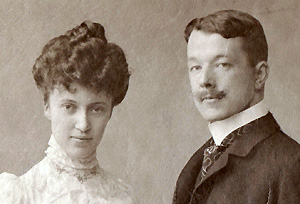 In 1902, in The Hague, he married Jeanne Bricou of Belgian-Dutch origin. By doing so, he broke away from the strict tradition of his family and his social class.
In 1902, in The Hague, he married Jeanne Bricou of Belgian-Dutch origin. By doing so, he broke away from the strict tradition of his family and his social class.Although her mother descended from the respected patrician family Storm de Grave, it was the first bourgeois marriage in 16 generations of his paternal and his maternal lineages.
In German-Baltic aristocracy there was an unwritten law that a marriage was regarded as befitting one’s rank only when all prior generations of both partners were of the same rank. For Conrad, it meant he must find a daughter of a baron in the Baltic provinces whose ancestors fulfilled these expectations over 15 generations.
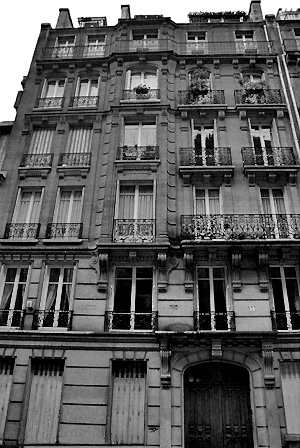
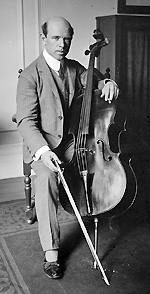 Conrad and Jeanne moved to Paris. They acted progressively and pragmatically;
Conrad and Jeanne moved to Paris. They acted progressively and pragmatically; they agreed to a separation of property while moving into an entire floor of a modern building at Rue Cernuschi 14 in the 17th arrondissement.
Subsequently began Conrad’s friendship of mutual high regard with the cellist Pablo Casals, exactly six years his junior (born 1876, December 29).
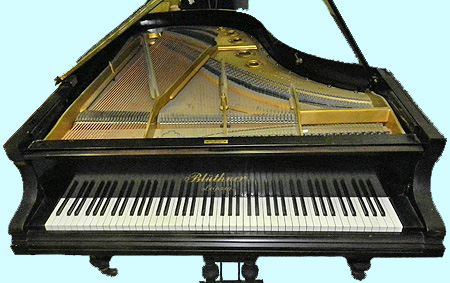 Conrad von Vietinghoff's Grand Parlor Piano dates from 1902, the year when he married. Perhaps it was a wedding present from his parents and his brothers?
Conrad von Vietinghoff's Grand Parlor Piano dates from 1902, the year when he married. Perhaps it was a wedding present from his parents and his brothers? The piano was from Julius Blüthner factory which was founded in 1853 and around 1900 was the largest German producer for all kinds of pianos, with production and sales extending abroad. It suffered heavy economic loses because World War I, this was followed by the complete destruction of the German factory in Leipzig by the British Royal Air Force bombing in 1943, and then later as a result of the nationalization during the communist regime in German Democratic Republic. Since reunification in 1990 the company is back in the family's hands and the instruments are again internationally in demand.
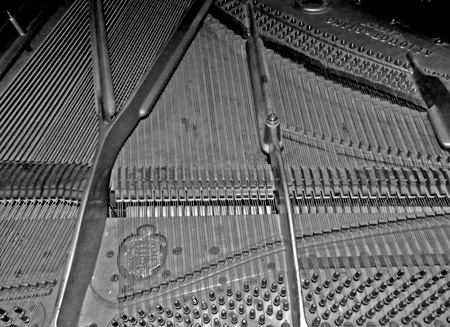 The pianos were ordered by the courts of Russia, Denmark, Germany and Austria. Many composers and piano players owned a Blüthner Grand Piano, such as Wagner, Tchaikovsky, Brahms, J. Strauss jun., Mahler, Reger, Debussy, Busoni, Rachmaninoff, Bartok, Shostakovich, and Arrau.
The pianos were ordered by the courts of Russia, Denmark, Germany and Austria. Many composers and piano players owned a Blüthner Grand Piano, such as Wagner, Tchaikovsky, Brahms, J. Strauss jun., Mahler, Reger, Debussy, Busoni, Rachmaninoff, Bartok, Shostakovich, and Arrau. Up until 2003, for a total of 150 years, more than 150,000 instruments were made.
In 1873, Julius Blüthner invented the Aliquot Grand Piano with a 4th cord in the upper middle range which vibrates sympathetically and creates the overtone.
Thus, the sound is richer, more colorful and transparent (particularly at a low level of volume) which corresponds to Conrad’s delicate style of interpretation and his remarkably soft touch.
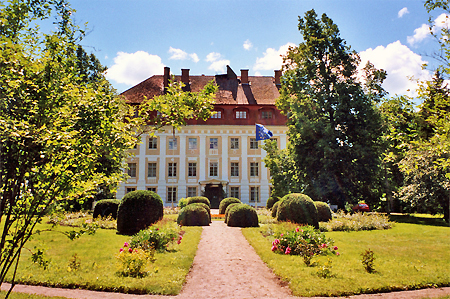 In 1904, his father Arnold Julius von Vietinghoff (1833-1918) divided his wealth among his 4 sons, in compensation he received a life annuity from them. The oldest got the property Neschwitz in Saxony, the second the parent’s home and property in Salisburg, and the third married another Vietinghoff who owned Marienburg in Livonia (today Aluksne in Latvia) from lineage of the above mentioned Otto Hermann.
In 1904, his father Arnold Julius von Vietinghoff (1833-1918) divided his wealth among his 4 sons, in compensation he received a life annuity from them. The oldest got the property Neschwitz in Saxony, the second the parent’s home and property in Salisburg, and the third married another Vietinghoff who owned Marienburg in Livonia (today Aluksne in Latvia) from lineage of the above mentioned Otto Hermann.However, in 1904, Conrad as the youngest of the 4 brothers received his share of the family’s fortune in cash – fortunately! The family domicile, Salisburg Manor in present-day Latvia, was burned in January 1906, during the 1905 Russian Revolution (together with some 100 other manor houses). During the following years, most of the property (of around 64,000 acres at his grandfather’s time) was expropriated. The manor house would remain a ruin for 20 years before it became a school. By 1945, all of his brothers and nephews had lost their properties.
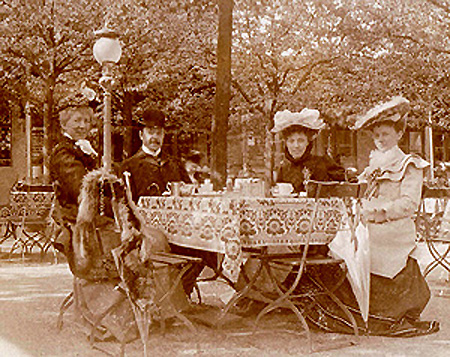 Until the early death of his wife in 1926, the two took part in the illustrious social life in Paris (France), Wiesbaden (Germany), Geneva and Zurich (Switzerland) attended by the aristocracy, the higher bourgeoisie, different star artists and their patrons. From 1907-1913 they lived in Wiesbaden where he formed a friendship with the young composer and director Carl Schuricht (1880-1967).
Until the early death of his wife in 1926, the two took part in the illustrious social life in Paris (France), Wiesbaden (Germany), Geneva and Zurich (Switzerland) attended by the aristocracy, the higher bourgeoisie, different star artists and their patrons. From 1907-1913 they lived in Wiesbaden where he formed a friendship with the young composer and director Carl Schuricht (1880-1967).By tireless independent training, Conrad improved his technique and deepened his expression. However, as can be proved, he performed only twice in public charity concerts: 1910 in Germany and 1923 in Switzerland. Yet he gave private concerts at his or at friend's home several times. Conrad von Vietinghoff put extremely heavy demands on himself, was not stress-resistant and much too shy to take the floor in public concerts.
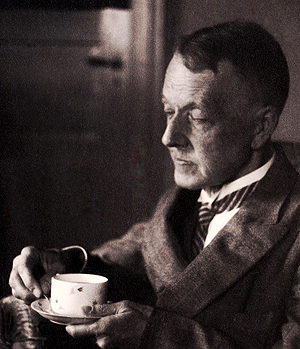 Once more his anticipating sense led him to a safe country just in time: in 1913 he moved with his wife and his children to Geneva, Switzerland. There, his francophone wife felt more at home and the climate change from the rather humid Rhine valley to the vicinity of the mountains was recommended for Egon's health. Their ten year old son was recovering from lymphatic tuberculosis (as far as we know). In addition the cosmopolitan atmosphere was attractive.
Once more his anticipating sense led him to a safe country just in time: in 1913 he moved with his wife and his children to Geneva, Switzerland. There, his francophone wife felt more at home and the climate change from the rather humid Rhine valley to the vicinity of the mountains was recommended for Egon's health. Their ten year old son was recovering from lymphatic tuberculosis (as far as we know). In addition the cosmopolitan atmosphere was attractive.As an idealist who spoke several languages, Conrad von Vietinghoff occasionally helped at the Red Cross in Geneva during WW I. He sorted mails for German prisoners of war and forwarded letters to them. As an alien and stateless musician he could not be labeled by the Swiss community. In the generally anti-German atmosphere, a neighbor caused the police to investigate Conrad on suspicion of spying, even though he was an obvious pacifist and spiritual individual. Finally, the annoying and completely absurd legal proceedings were abandoned.
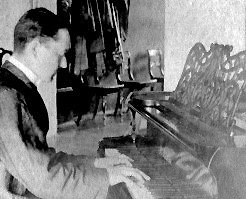 Without his knowledge, he was used as the model for the character of Alexis in the first novel of the same name written in 1927/1928 (published in English in 1984) by Marguerite Yourcenar. The parents of the future, famous Belgian-American writer were friends of the Vietinghoff family.
Without his knowledge, he was used as the model for the character of Alexis in the first novel of the same name written in 1927/1928 (published in English in 1984) by Marguerite Yourcenar. The parents of the future, famous Belgian-American writer were friends of the Vietinghoff family.Yourcenar named her character after Conrad’s second son, the younger brother of the painter. However, "Alexis" is undoubtedly Conrad even-though the novel is only one long fictitious letter. (for further details see subchapter 8).